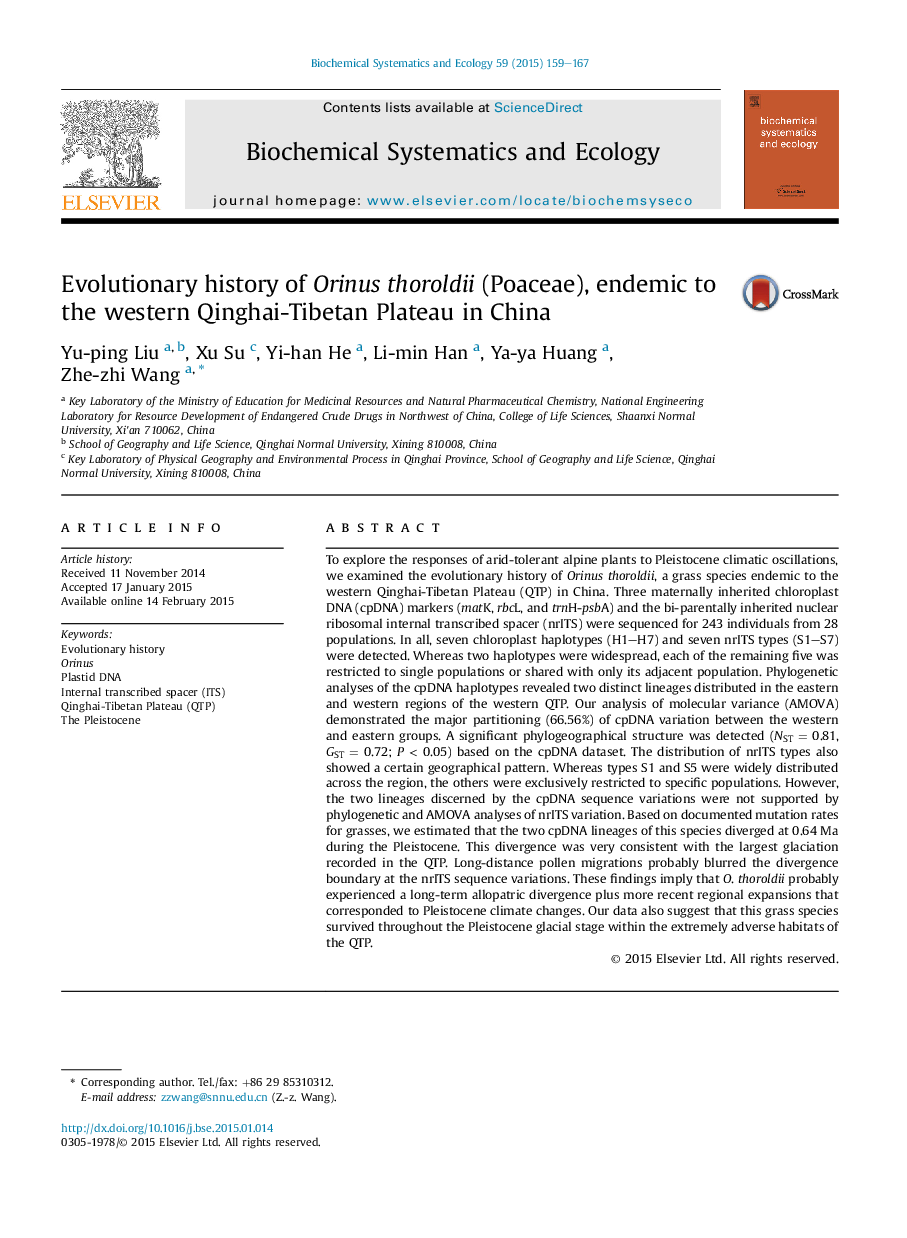| کد مقاله | کد نشریه | سال انتشار | مقاله انگلیسی | نسخه تمام متن |
|---|---|---|---|---|
| 1351354 | 1500407 | 2015 | 9 صفحه PDF | دانلود رایگان |

• We explored responses of arid-tolerant alpine plants to climatic oscillations.
• We examined evolutionary history of endemic perennial species in western QTP.
• The largest glaciation promoted the deep divergence by allopatric differentiation.
• It experienced a recent regional expansion relevant to Pleistocene climate changes.
• Multiple refugia were retained during the LGM in the high-altitude regions.
To explore the responses of arid-tolerant alpine plants to Pleistocene climatic oscillations, we examined the evolutionary history of Orinus thoroldii, a grass species endemic to the western Qinghai-Tibetan Plateau (QTP) in China. Three maternally inherited chloroplast DNA (cpDNA) markers (matK, rbcL, and trnH-psbA) and the bi-parentally inherited nuclear ribosomal internal transcribed spacer (nrITS) were sequenced for 243 individuals from 28 populations. In all, seven chloroplast haplotypes (H1–H7) and seven nrITS types (S1–S7) were detected. Whereas two haplotypes were widespread, each of the remaining five was restricted to single populations or shared with only its adjacent population. Phylogenetic analyses of the cpDNA haplotypes revealed two distinct lineages distributed in the eastern and western regions of the western QTP. Our analysis of molecular variance (AMOVA) demonstrated the major partitioning (66.56%) of cpDNA variation between the western and eastern groups. A significant phylogeographical structure was detected (NST = 0.81, GST = 0.72; P < 0.05) based on the cpDNA dataset. The distribution of nrITS types also showed a certain geographical pattern. Whereas types S1 and S5 were widely distributed across the region, the others were exclusively restricted to specific populations. However, the two lineages discerned by the cpDNA sequence variations were not supported by phylogenetic and AMOVA analyses of nrITS variation. Based on documented mutation rates for grasses, we estimated that the two cpDNA lineages of this species diverged at 0.64 Ma during the Pleistocene. This divergence was very consistent with the largest glaciation recorded in the QTP. Long-distance pollen migrations probably blurred the divergence boundary at the nrITS sequence variations. These findings imply that O. thoroldii probably experienced a long-term allopatric divergence plus more recent regional expansions that corresponded to Pleistocene climate changes. Our data also suggest that this grass species survived throughout the Pleistocene glacial stage within the extremely adverse habitats of the QTP.
Journal: Biochemical Systematics and Ecology - Volume 59, April 2015, Pages 159–167